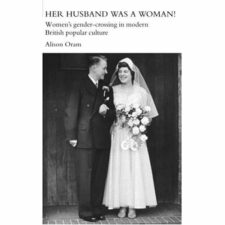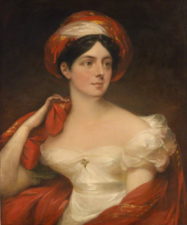On 17 March 1921 Marie Stopes and her husband of three years, Humphrey Verdon Roe, founded the Mothers’ Clinic for Constructive Birth Control at 61 Marlborough Road, Holloway, North London; it was the first birth control clinic in England. For Stopes this fulfilled a long-standing ambition. Brought up in entire ignorance of human sexuality (despite her scientific education, her doctorate in science, and her flourishing academic career), she had survived her first marriage to an impotent husband and had ultimately (after giving herself a crash course in sex education in the British Museum library) got the marriage annulled for non-consummation. Having made a second marriage on more promising foundations to a man who shared her interests, she had another terrible blow to survive, in the birth of a stillborn son. She blamed his death on doctors who administered the currently fashionable “twilight sleep”. Already a published scientific writer, travel writer, and poet, Stopes had launched the most popular and successful aspect of her literary career, her writing on sexuality, birth control, and motherhood, with Married Love, which was published in 1918, about seven weeks before her second marriage.
Orlando: Women’s Writing in the British Isles from the Beginnings to the Present, says of this book: “Its style famously combines an overheated lyricism (orgasm is described in terms of rapture, flux, swooning, flaming tides, and cosmic space) with sensible, practicable, easy-to-follow description and even instruction.” But the lyricism was a good tactic: it made the sensible advice acceptable, or at any rate less unacceptable. To a whole generation (including my parents, married in 1935) Stopes was “our Bible”. Married Love had a chapter on contraception, and that was the subject of her next book, Wise Parenthood, published later the same year. Radiant Motherhood, 1920, set out rules for the health of pregnant women and infants.
Apart from these three famous titles, Stopes preached her gospel of sexual enjoyment and reproductive health in a periodical (Birth Control News, 1922-46); a play (Our Ostriches, 1923); and pamphlets: A Letter to Working Mothers: on how to have healthy children and avoid weakening pregnancies, published in 1919 for free distribution; Truth about Venereal Disease, published at a very low price in 1921; and A New Gospel to All Peoples, 1922. She began to circulate this last by having it “delivered to the Anglican Bishops assembled at Lambeth” for the Synod of the Church of England. Whether intentionally or not, this method of distribution by an activist woman to influential males was following a tactic of such seventeenth- and eighteenth-century polemicists as Joan Whitrow or Elinor James, both of them vivid and passionate pamphleteers, and both of them given to handing copies of their works, personally, to male individuals who were set in authority over them. Like Whitrow and James, Stopes believed that she had “a direct commission from God to beard male authorities with urgent printed advice.” She was, however, unlike them in her message, which was that sex in marriage is a gift of God, beneficial to human beings, and worthy of endorsement in a religious context.
Stopes was not alone in her feminist campaign for birth control. The movement was international, and traces as interesting a path through the briars and thickets of gender politics as does the campaign for the vote. (Stopes was a suffragist before she moved on to contraception.) Richard Carlile published a pioneering eighteen-penny pamphlet about birth control in 1826 which, reprinted at intervals, retained its power to bring down furious official condemnation. In 1915, before she began to publish on contraception, Marie Stopes met the American activist Margaret Sanger for detailed discussion of different methods. It was probably Sanger who introduced Stopes to the small contraceptive cap (the “French pessary”) which dated back to the 1830s. (Although Stopes preferred this smaller cap to the larger diaphragm or Dutch cap, and it was at first widely used in Britain, it fell out of favour in time and was replaced by the diaphragm.) Sanger was then in England (having jumped bail in the United States after being arrested for distributing pornography, i.e. birth-control material). She forged connections with several English women writers. She employed Storm Jameson as a researcher, and when her pamphlet Family Limitation: Handbook for Working Mothers was banned in this country, Dora Russell led a legal battle against its suppression.
Marie Stopes was often ridiculed and vilified in her lifetime. (Sanger, too, when she opened her first birth-control clinic four and a half years ahead of Stopes, was arrested and jailed for thirty days.) Stopes went so far as to sue one detractor, Halliday Sutherland, but she lost her case. The jury were inclined to be sympathetic but the judge was resolutely hostile. Recently Germaine Greer has dismissed her (along with Sanger) as insensitive and lacking in respect for opposing views. She does this in the course of her argument in Sex and Destiny: The Politics of Human Fertility, 1984, that despite individuals who have worked for it, the movement for population control “remains a cause not of the left, but of the radical, ultra right.” Stopes, however, has very little in common with Greer’s primary target — Westerners eager to limit the fertility of women in countries much poorer than their own.
Stopes took up the campaign for birth control where such doughty nineteenth-century feminists as Annie Besant and Henrietta Müller had left it. Besant and Charles Bradlaugh had written in 1877: “We think it more moral to prevent the conception of children, than, after they are born, to murder them by want of food, air and clothing.” For this publication, Fruits of Philosophy, they were arrested, tried, and sentenced to six months in prison and a fine of £200 each, though the judge then relented and released them on bail, and on appeal they were acquitted. This publication and trial, says Orlando, “marked a turning point in the debates around birth control and the dissemination of information about it.” Müller, in a paper responding to a later publication of Besant’s, emphasized “that birth control must remain in the hands of the woman in order to ensure her right to her own body.” Dora Marsden’s The Freewoman was supporting contraception before Marie Stopes came on the scene, and voices contemporary with Stopes included those of the pioneer Anglican churchwoman Maude Royden
In 1928 the World Sexual Reform League was founded, with contraception on its list of policy points along with sex education, sexual equality, sexually transmitted diseases, prostitution, reform of the law on marriage, divorce, abortion, and illegitimacy, and changes in social attitudes towards single mothers and minority sexualities. Stopes spoke at its second annual conference, held in London, along with Naomi Mitchison (who, like her, spoke on birth control), Dora Russell, Vera Brittain, and Ethel Mannin.
Although Stopes came to self-identify as a eugenicist, her concern to make birth-control affordable to working women concentrates on the quality of those women’s lives and the conditions in which their children will grow up, rather than the “quality” of their genetic inheritance. The Oxford Dictionary of National Biography suggests (as Orlando has it) that “in practice her sympathy for needy individuals tended to overcome the disapproval she might have been expected to feel for physically unsound breeders.”
Marie Stopes was a self-booster, who enjoyed her own fame and had a ridiculously eulogistic biography ghost-written by a friend. But she was a sincere, courageous, and effective campaigner for one of the most important issues affecting the lives of women. Her work in reproductive health lives on in the form of the organization called Marie Stopes International, which was founded in 1976 as the direct descendant of that first clinic. The huge proportion of women who in 2011 take their own contraceptive routines for granted might remember with gratitude the founding of the Mothers’ Clinic for Constructive Birth Control in 1921. “Her work and its legacy and the subsequent history of family planning” are the subject of a one day-conference at the Institute for Historical Research, London, on 11 March 2011.
This information is provided by Dr Isobel Grundy, University of Alberta, and comes from Orlando: Women’s Writing in the British Isles from the Beginnings to the Present, Cambridge University Press, by subscription: see http://orlando.cambridge.org.

